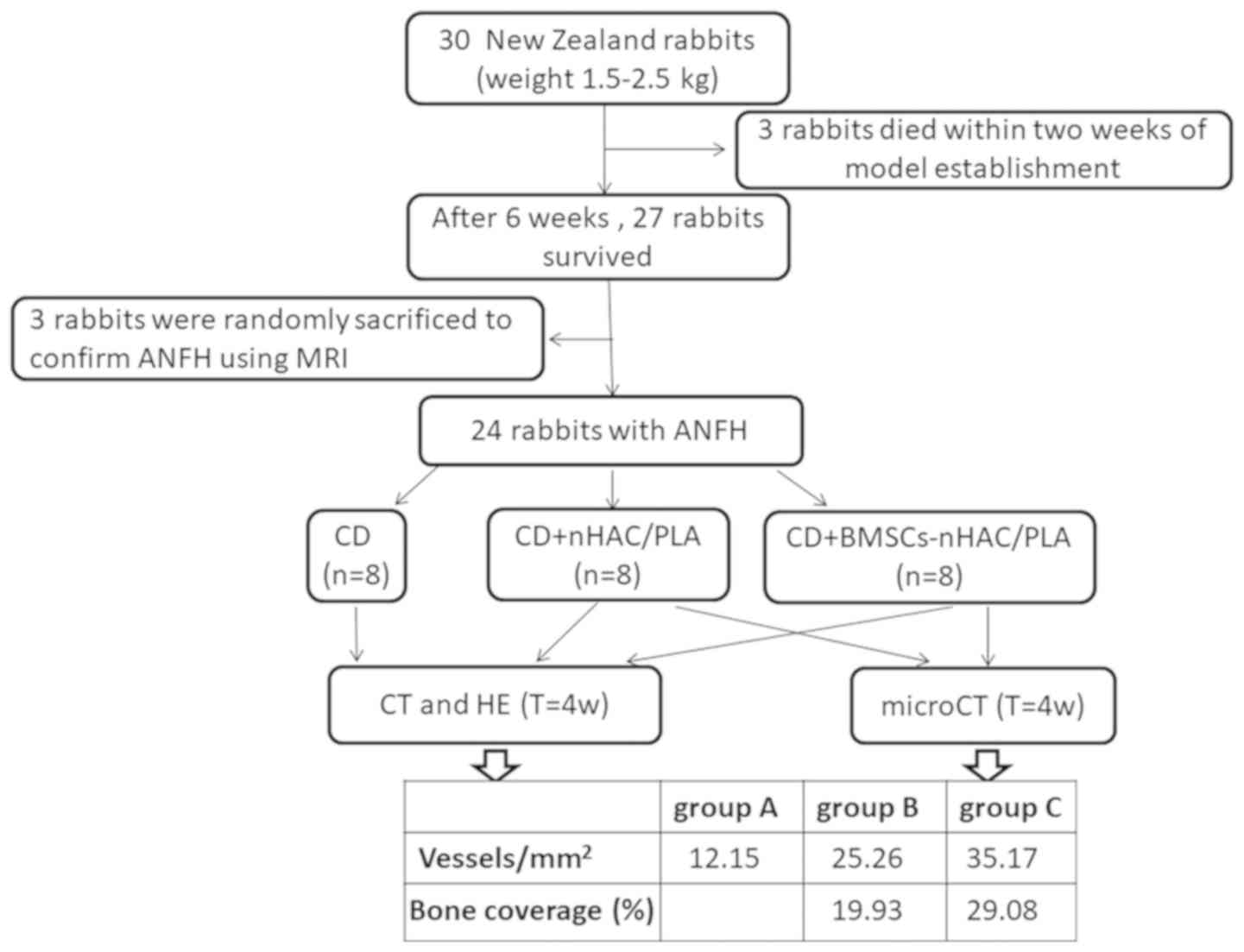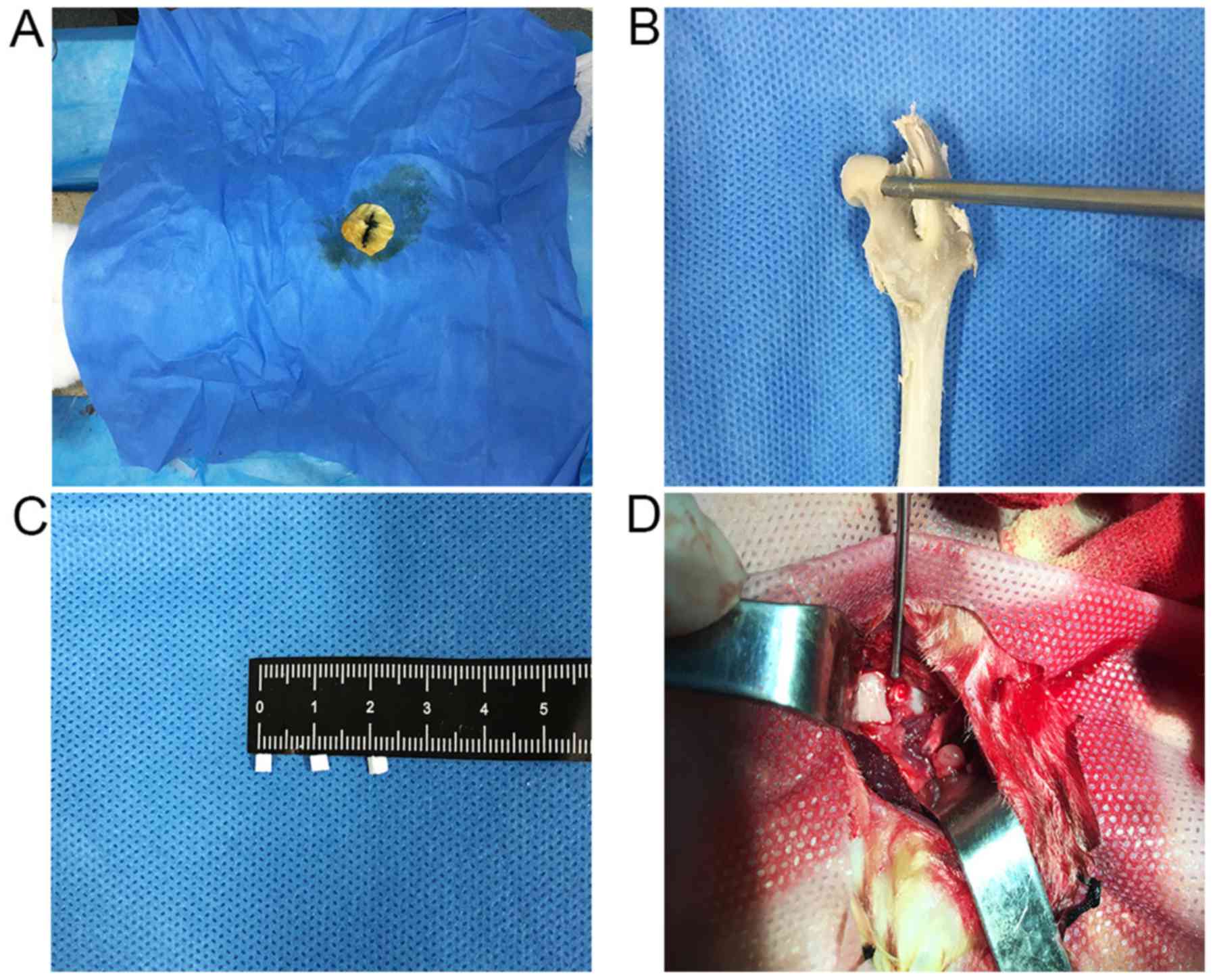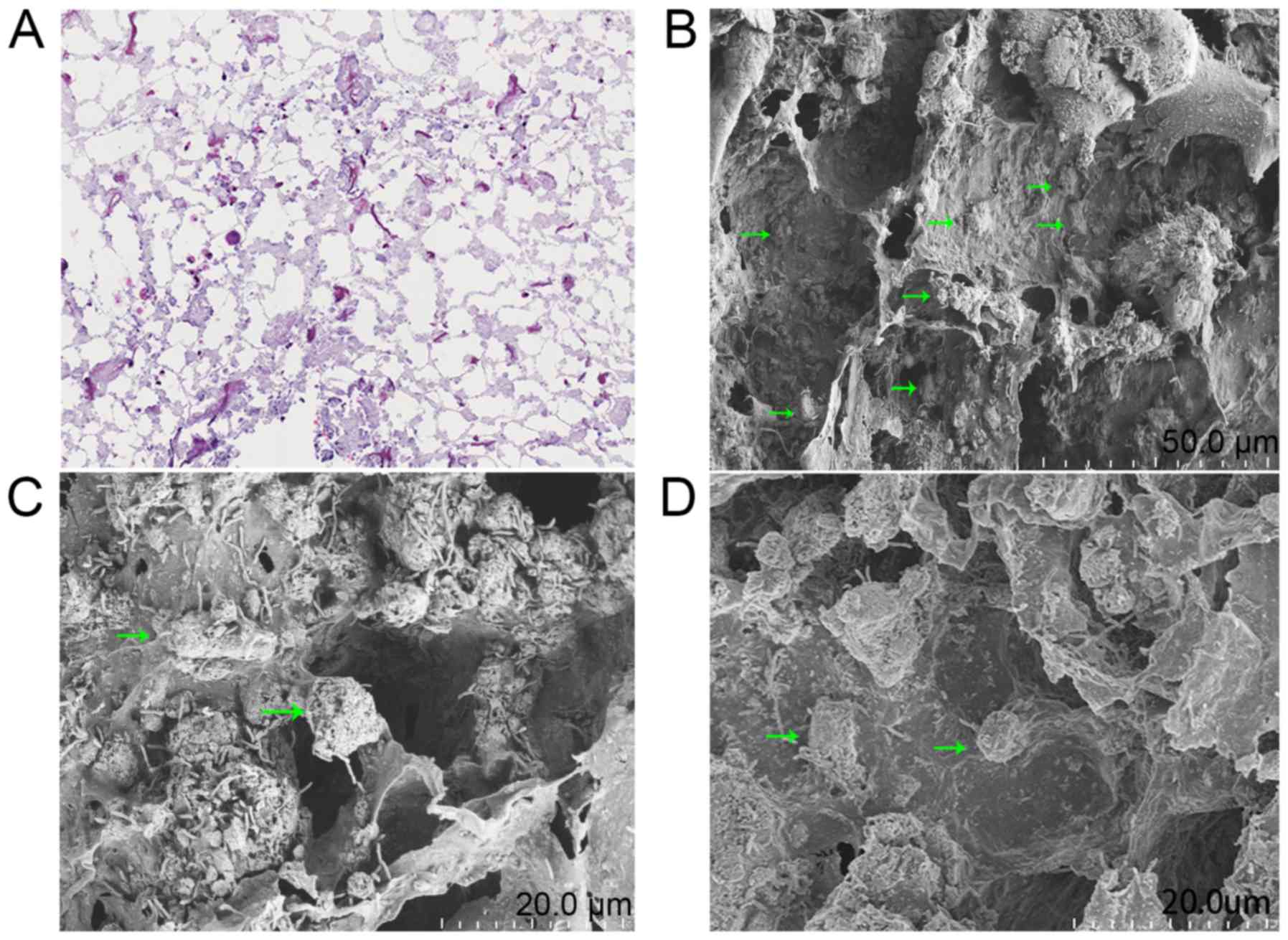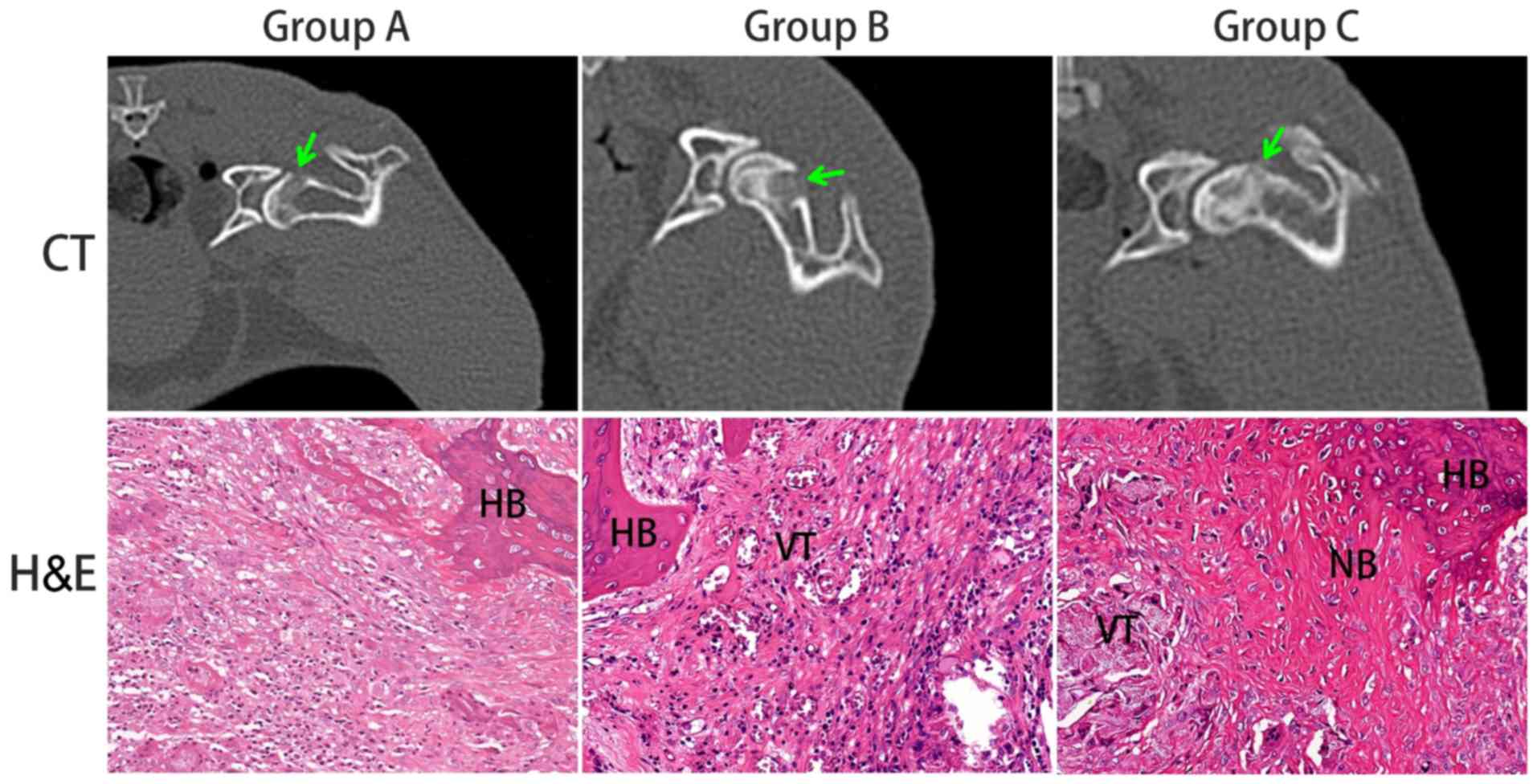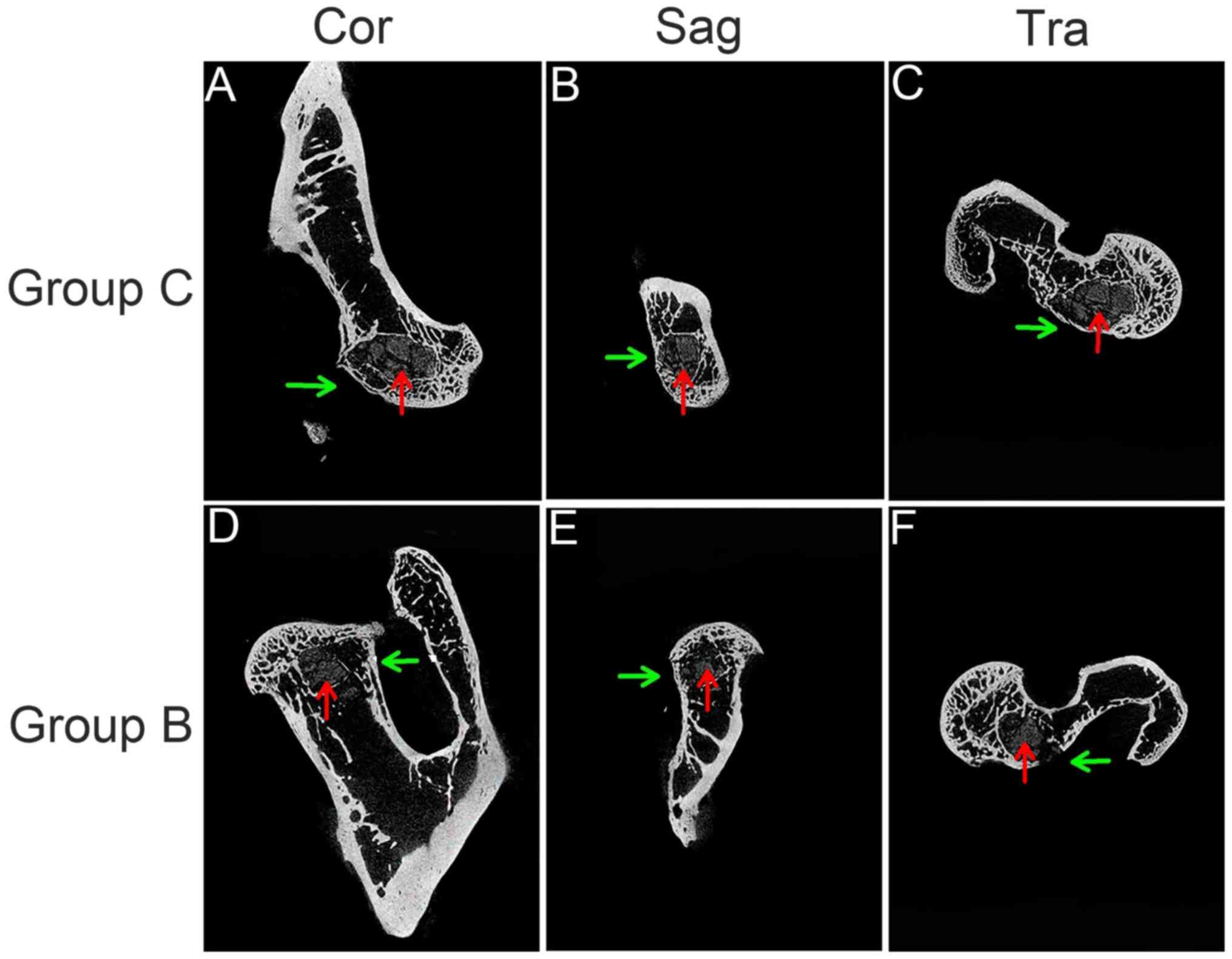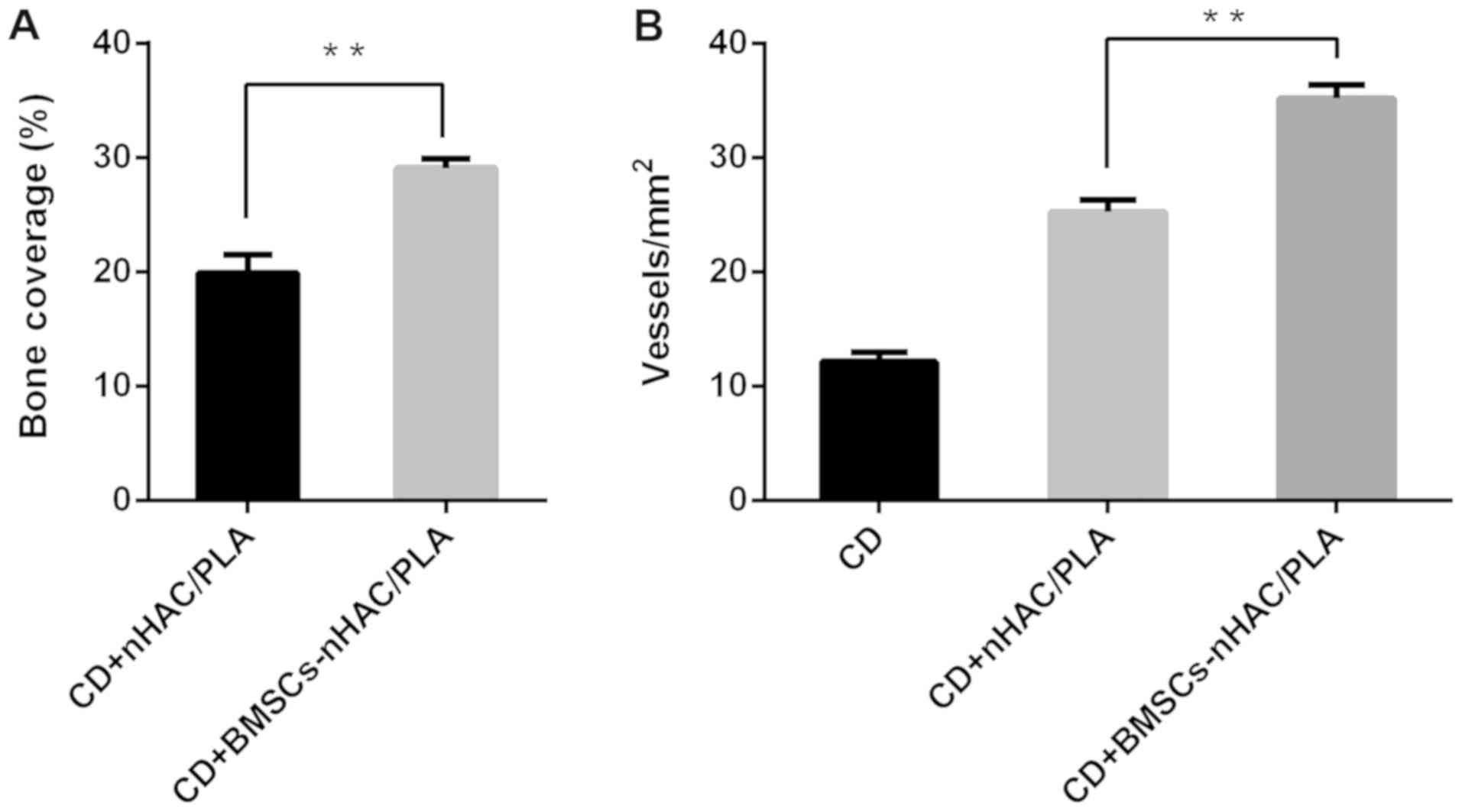|
1
|
Moya-Angeler J, Gianakos AL, Villa JC, Ni
A and Lane JM: Current concepts on osteonecrosis of the femoral
head. World J Orthop. 6:590–601. 2015. View Article : Google Scholar : PubMed/NCBI
|
|
2
|
van der Jagt D, Mokete L, Pietrzak J,
Zalavras CG and Lieberman JR: Osteonecrosis of the femoral head:
Evaluation and treatment. J Am Acad Orthop Surg. 23:69–70. 2015.
View Article : Google Scholar : PubMed/NCBI
|
|
3
|
Mont MA, Jones LC and Hungerford DS:
Nontraumatic osteonecrosis of the femoral head: Ten years later. J
Bone Joint Surg Am. 88:1117–1132. 2006. View Article : Google Scholar : PubMed/NCBI
|
|
4
|
Ficat RP: Treatment of avascular necrosis
of the femoral head. Hip. 279–295. 1983.PubMed/NCBI
|
|
5
|
Zhao DW, Yu M, Hu K, Wang W, Yang L, Wang
BJ, Gao XH, Guo YM, Xu YQ and Wei YS: Prevalence of nontraumatic
osteonecrosis of the femoral head and its associated risk factors
in the Chinese population: Results from a nationally representative
survey. Chin Med J (Eng). 128:2843–2850. 2015. View Article : Google Scholar
|
|
6
|
Larson E, Jones LC, Goodman SB, Koo KH and
Cui Q: Early-stage osteonecrosis of the femoral head: Where are we
and where are we going in year 2018? Int Orthop. 42:1723–1728.
2018. View Article : Google Scholar : PubMed/NCBI
|
|
7
|
Sultan AA, Khlopas A, Surace P, Samuel LT,
Faour M, Sodhi N, Krebs VE, Stearns KL, Molloy RM and Mont MA: The
use of non-vascularized bone grafts to treat osteonecrosis of the
femoral head: Indications, techniques, and outcomes. Int Orthop.
43:1315–1320. 2019. View Article : Google Scholar : PubMed/NCBI
|
|
8
|
Wang Y, Kim UJ, Blasioli DJ, Kim HJ and
Kaplan DL: In vitro cartilage tissue engineering with 3D porous
aqueous-derived silk scaffolds and mesenchymal stem cells.
Biomaterials. 26:7082–7094. 2005. View Article : Google Scholar : PubMed/NCBI
|
|
9
|
Fan L, Zhang C, Yu Z, Shi Z, Dang X and
Wang K: Transplantation of hypoxia preconditioned bone marrow
mesenchymal stem cells enhances angiogenesis and osteogenesis in
rabbit femoral head osteonecrosis. Bone. 81:544–553. 2015.
View Article : Google Scholar : PubMed/NCBI
|
|
10
|
Li D, Xie X, Yang Z, Wang C, Wei Z and
Kang P: Enhanced bone defect repairing effects in
glucocorticoid-induced osteonecrosis of the femoral head using a
porous nano-lithium-hydroxyapatite/gelatin
microsphere/erythropoietin composite scaffold. Biomater Sci.
6:519–537. 2018. View Article : Google Scholar : PubMed/NCBI
|
|
11
|
Lai Y, Cao H, Wang X, Chen S, Zhang M,
Wang N, Yao Z, Dai Y, Xie X, Zhang P, et al: Porous composite
scaffold incorporating osteogenic phytomolecule icariin for
promoting skeletal regeneration in challenging osteonecrotic bone
in rabbits. Biomaterials. 153:1–13. 2018. View Article : Google Scholar : PubMed/NCBI
|
|
12
|
Wu S, Xiao Z, Song J, Li M and Li W:
Evaluation of BMP-2 enhances the osteoblast differentiation of
human amnion mesenchymal stem cells seeded on
nano-hydroxyapatite/Collagen/Poly(l-Lactide). Int J Mol Sci.
19(pii): E21712018. View Article : Google Scholar : PubMed/NCBI
|
|
13
|
Wu DJ, Hao AH, Zhang C, Cui FZ, Wang XW,
Gao CZ, Zhou CJ, Liu JL, Qiao Y and Ma SZ: Promoting of
angiogenesis and osteogenesis in radial critical bone defect
regions of rabbits with nano-hydroxyapatite/collagen/PLA scaffolds
plus endothelial progenitor cells. Zhonghua Yi Xue Za Zhi.
92:1630–1634. 2012.(In Chinese). PubMed/NCBI
|
|
14
|
Rajagopal M, Balch Samora J and Ellis TJ:
Efficacy of core decompression as treatment for osteonecrosis of
the hip: A systematic review. Hip Int. 22:489–493. 2012. View Article : Google Scholar : PubMed/NCBI
|
|
15
|
He Z: The Guide for the Care and Use of
Laboratory Animals. China Science Press; Washington: 2016
|
|
16
|
Xie X, Du X, Li K, Chen Y, Guan Y, Zhao X,
Niu G, Luan Y, Zhang D, Sun C, et al: Construction of engineered
corpus cavernosum with primary mesenchymal stem cells in vitro. Sci
Rep. 7:180532017. View Article : Google Scholar : PubMed/NCBI
|
|
17
|
Wang X, Xing H, Zhang G, Wu X, Zou X, Feng
L, Wang D, Li M, Zhao J, Du J, et al: Restoration of a critical
mandibular bone defect using human alveolar bone-derived stem cells
and porous nano-HA/Collagen/PLA scaffold. Stem Cells Int.
2016:87416412016. View Article : Google Scholar : PubMed/NCBI
|
|
18
|
E LL, Xu WH, Feng L, Liu Y, Cai DQ, Wen N
and Zheng WJ: Estrogen enhances the bone regeneration potential of
periodontal ligament stem cells derived from osteoporotic rats and
seeded on nano-hydroxyapatite/collagen/poly(L-lactide). Int J Mol
Med. 37:1475–1486. 2016. View Article : Google Scholar : PubMed/NCBI
|
|
19
|
O'Brien FJ: Biomaterials & scaffolds
for tissue engineering. Materials Today. 14:88–95. 2011. View Article : Google Scholar
|
|
20
|
Kihara T, Hirose M, Oshima A and Ohgushi
H: Exogenous type I collagen facilitates osteogenic differentiation
and acts as a substrate for mineralization of rat marrow
mesenchymal stem cells in vitro. Biochem Biophys Res Commun.
341:1029–1035. 2006. View Article : Google Scholar : PubMed/NCBI
|
|
21
|
Zhang C, Hu YY, Cui FZ, Zhang SM and Ruan
DK: A study on a tissue-engineered bone using rhBMP-2 induced
periosteal cells with a porous
nano-hydroxyapatite/collagen/poly(L-lactic acid) scaffold. Biomed
Mater. 1:56–62. 2006. View Article : Google Scholar : PubMed/NCBI
|
|
22
|
Griffith LG and Naughton G: Tissue
engineering-current challenges and expanding opportunities.
Science. 295:1009–1014. 2002. View Article : Google Scholar : PubMed/NCBI
|
|
23
|
Zhang HX, Zhang XP, Xiao GY, Hou Y, Cheng
L, Si M, Wang SS, Li YH and Nie L: In vitro and in vivo evaluation
of calcium phosphate composite scaffolds containing BMP-VEGF loaded
PLGA microspheres for the treatment of avascular necrosis of the
femoral head. Mater Sci Eng C Mater Biol Appl. 60:298–307. 2016.
View Article : Google Scholar : PubMed/NCBI
|
|
24
|
Fu Q, Tang NN, Zhang Q, Liu Y, Peng JC,
Fang N, Yu LM, Liu JW and Zhang T: Preclinical study of cell
therapy for osteonecrosis of the femoral head with allogenic
peripheral blood-derived mesenchymal stem cells. Yonsei Med J.
57:1006–115. 2016. View Article : Google Scholar : PubMed/NCBI
|
|
25
|
Zhang YG, Wang X, Yang Z, Zhang H, Liu M,
Qiu Y and Guo X: The therapeutic effect of negative pressure in
treating femoral head necrosis in rabbits. PLoS One. 8:e557452013.
View Article : Google Scholar : PubMed/NCBI
|















